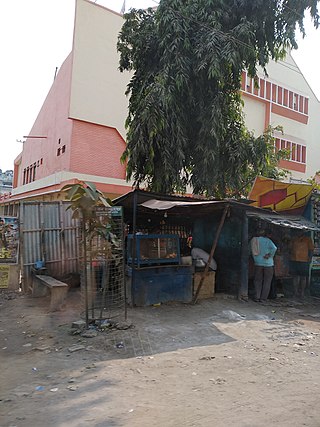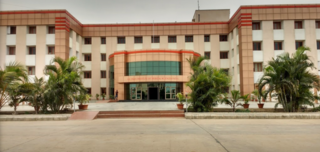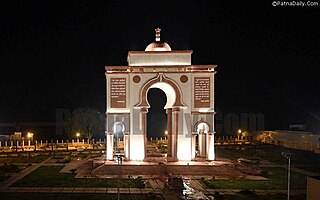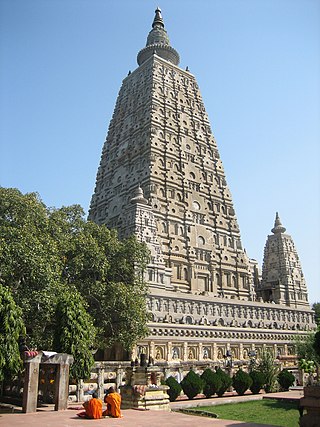
Khawaja Syed Muhammad Nizamuddin Auliya, also known as Hazrat Nizamuddin, Sultan-ul-Mashaikh and Mahbub-e-Ilahi, was an Indian Sunni Muslim scholar, Sufi saint of the Chishti Order, and is one of the most famous Sufis from the Indian Subcontinent. His predecessors were Fariduddin Ganjshakar, Qutbuddin Bakhtiyar Kaki, and Moinuddin Chishti, who were the masters of the Chishti spiritual chain or silsila in the Indian subcontinent.

Bihar Sharif is the headquarters of Nalanda district and the fifth-largest sub-metropolitan area in the eastern Indian state of Bihar. Its name is a combination of two words: Bihar, derived from vihara, also the name of the state; and Sharif. The city is a hub of education and trade in southern Bihar, and the economy centers around agriculture supplemented by tourism, the education sector and household manufacturing. The ruins of the ancient Nalanda Mahavihara, a UNESCO World Heritage Site, are located near the city.

Kamaluddin Yahya Maneri popularly known as Makhdoom Yahya Maneri was an Indian Sufi saint of the 13th century. His tomb is known as Badi Dargah, near a mosque located in Maner Sharif, 29 km from Patna, Bihar, India.

Barh is a sub division of Patna District. It is a town and one of the 6 sub-division of Patna district, Bihar in India. It is located on the southern bank of the Ganges.

Phulwari or Phulwari Sharif is Block and town in Patna district in the Indian state of Bihar. It is included in the Patna Metropolitan Region and is one of the fastest growing area of urban Patna. The civilisation of the city dates back to the days of inception of the Sufi culture in India. Phulwari Sharif had been frequented by most Sufi saints of that period and is famous for its islamic spiritual dargah and old mosques.

Ramachandra "Ram" Guha is an Indian historian, environmentalist, writer and public intellectual whose research interests include social, political, contemporary, environmental and cricket history. He is an important authority on the history of modern India.The American Historical Association (AHA) has conferred its Honorary Foreign Member prize for the year 2019 on Ramchandra Guha. He is the third Indian historian to be recognised by the association.
Fatuha also spelled Fatuwah or Fatuwa, is a Satellite town in proposed Patna Metropolitan Region, in the Patna district in the Indian state of Bihar. Fatuha lies 24 km east of Patna the capital of Bihar. Fatuha is an important industrial centre known for small industries and its handloom industries. The city's name is said to come from its status as a center of textile manufacturing.
Khwaja Usman Harooni was an early modern wali or Sufi saint of Islam in India, a successor to Shareef Zandani, sixteenth link in the Silsila of the Chishti order, and master of Moinuddin Chishti. Usman Harooni was born in Haroon, Iran. His year of birth is variously given as 1096, 1116 and 1131 AD. He is also known by the nicknames Abu Noor and Abu Mansur.
Bihar has been a major centre of learning and home to one of the oldest universities of India dating back to the fifth century and the tradition of learning which had its origin from ancient times was lost during the medieval period when it is believed that marauding armies of the invaders destroyed these centres of learning.

Patna, historically known as Pāṭaliputra, is the capital and largest city of the state of Bihar in India. According to the United Nations, as of 2018, Patna had a population of 2.35 million, making it the 19th largest city in India. Covering 250 square kilometres (97 sq mi) and over 2.5 million people, its urban agglomeration is the 18th largest in India. Patna also serves as the seat of Patna High Court. The Buddhist, Hindu and Jain pilgrimage centres of Vaishali, Rajgir, Nalanda, Bodh Gaya and Pawapuri are nearby and Patna City is a sacred city for Sikhs as the tenth Sikh Guru, Guru Gobind Singh was born here. The modern city of Patna is mainly on the southern bank of the river Ganges. The city also straddles the rivers Son, Gandak and Punpun. The city is approximately 35 kilometres (22 mi) in length and 16 to 18 kilometres wide.

Maner also spelled Maner Sharif, is a Block and satellite town in Patna Metropolitan Region. It is part of the Patna district in the Indian state of Bihar. The ancient name of Maner was Maniyar Mathan which means musical city. Maner Sharif lies 24 km west of Patna, the capital of Bihar on NH-922. The town has tombs of Sufi saints Makhdoom Yahya Maneri and Makhdoom Shah Daulat, known as Bari Dargah and Chhoti Dargah.

The state of Bihar in eastern India, is one of the oldest inhabited places in the world with a history going back 3000 years. The rich culture and heritage of Bihar is evident from the innumerable ancient monuments that are dotted all over the state. Bihar is home to many tourist attractions and is visited by large numbers of tourists from all over the world. Around total 6 million tourists visit Bihar every year.

Tarkeshwari Sinha was an Indian politician and independence activist from Bihar. Among the first female politicians of the country, she took active role in the Quit India Movement. At the age of 26, she was elected to the 1st Lok Sabha from Patna East constituency in 1952. Subsequently, she was re-elected to the Lok Sabha in 1957, 1962 and 1967 from Barh constituency. She was the first female Deputy Finance Minister in the union cabinet led by prime minister Jawaharlal Nehru from 1958 to 1964. She had also led a delegation to the U.N. and Tokyo. Gulzar’s critically acclaimed movie, Aandhi was partly inspired by Tarkeshwari Sinha, apart from Indira Gandhi.
Hinduism is the most followed religion in Bihar, followed by nearly 82% of total population as per 2023 Bihar Caste based census. Islam is the second-most followed religion which is followed by nearly 17.7% of population. There is also a significant population of Buddhists and Christians in the state.
Gandhi Maidan or Gandhi Maidan Marg(Bankipore Maidan) is one of the most important thoroughfares in Patna, India. It is a historical place and is considered as a landmark of the city. Gandhi Maidan is the main market and commercial area of Patna with Ashok Rajpath which starts from Gandhi Maidan and Dak Bungalow Crossing and Bailey Road besides Frazer Road, Exhibition Road, Boring Road, and Boring Canal Road. There are many important institutes that have developed around the area of Gandhi Maidan.
Kalim Aajiz was an Indian writer of Urdu literature and a poet. He was an academic and chairman of the Urdu Advisory Committee of the Government of Bihar. He was a recipient of the fourth highest Indian civilian honour of Padma Shri from the Government of India in 1989.

Sharfuddin Ahmed Yahya Maneri, popularly known as Makhdoom-ul-Mulk Bihari and Makhdoom-e-Jahan (1263–1381), was a 13th-century Sufi mystic and saint active in medieval Bihar.
Adam Sufi (1187–1297), popularly known as Makhdoom Adam Sufi, was an Islamic scholar, preacher and Sufi saint of Chishti order. He was the son of Sayyid Ibrahim Chishti of Hajipur. He was the father of Sayyid Hamid ad-Din Chishti Rajgiri and grandfather of Taym Allah Safayd Baz. He is buried in Pakki Dargah, near Jethuli in Patna, India.












